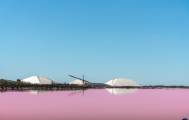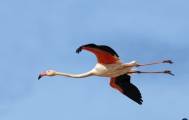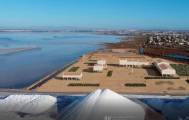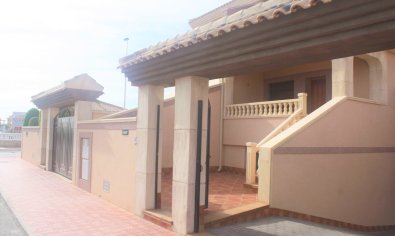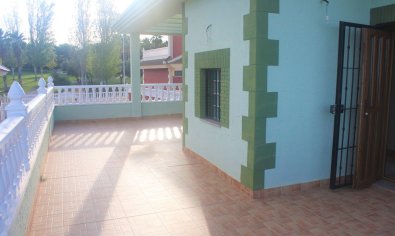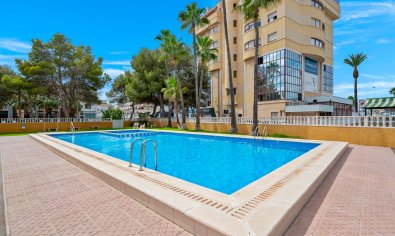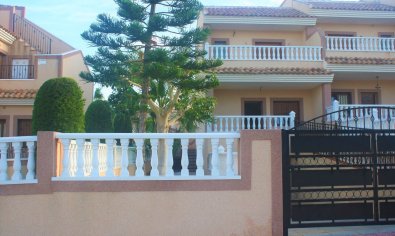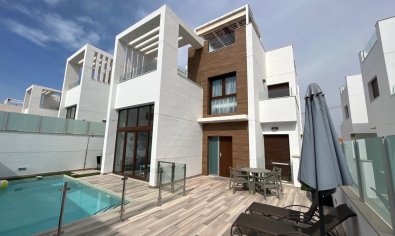Discover the salt lakes of Torrevieja: a wonder of nature

Did you know that Spain is known not only for its sunny beaches and vibrant cities, but also for one of the most extraordinary natural phenomena in Europe? The salt lakes of Torrevieja, located on the southern Costa Blanca, attract thousands of visitors every year, and for good reason. These unique lakes combine natural beauty, history and beneficial properties in a way you won't find anywhere else. From the pink color of the water to the centuries-old extraction of salt and the presence of flamingos, every aspect of this natural area is fascinating. In this article, we will take you through all the facets of the salt lakes of Torrevieja and discover why this is a place you should definitely have visited during your stay on the Costa Blanca.
Origins of the salt lakes
The salt lakes of Torrevieja and La Mata are part of the natural park Parque Natural de las Lagunas de La Mata y Torrevieja. The park is located in a basin formed in the Neo-Quaternary period by earth crust fractures in the Vega Baja del Segura region and the San Miguel de Salinas Mountains. These tectonic processes led to the creation of two important lagoons, known today as the salt lakes of Torrevieja and La Mata. The first recorded use of these lagoons dates back to 1321, when the Spanish crown granted the area to the city of Orihuela. Initially, attempts were made to use the area as an inland sea for fishing through the Acequión Canal, but failed due to its high salt content. In 1759, the area was reassigned to the crown, after which its potential for salt extraction was discovered. The salt lakes have centuries of human history and were formed by relatively recent geological processes.
Location and accessibility.
The salt lakes are located in the south of the province of Alicante, within the autonomous region of Valencia, spread over four municipalities: Guardamar del Segura, Rojales, Los Montesinos and Torrevieja. The park has a total area of 3,743 hectares, of which 2,100 hectares are water. The lagoon of Torrevieja covers 1,400 hectares and that of La Mata 700 hectares. The two lakes are separated by an earth fold called El Chaparral and are connected by an artificial channel. In addition, both lakes are connected to the Mediterranean Sea through separate Acequión channels for transporting salt. A tourist train departs from the center of Torrevieja and takes visitors on an informative ride along the salt lakes. This ride of about 50 minutes offers explanations about the history, flora, fauna and salt mining. For visitors, the park is otherwise easily accessible by car, bus (for example, via the Costa Azul line), bicycle and on foot. The visitor center is located near urbanization Torrelamata, just off the N-332.
Why is the lake pink?
The pink color of the salt lake near Torrevieja is a spectacular natural phenomenon that is immediately noticeable as soon as you approach the area. This particular hue is due to the presence of halobacteria and the single-celled alga Dunaliella salina. These microorganisms thrive in extremely salty environments and produce a reddish pigment as a protective mechanism against the intense sun. When salinity increases, especially in the warmer months, the concentration of these organisms also increases, leading to a deeper pink color. In addition, the reflection of sunlight on the surface of the water and the white salt crystals on the bottom play a role in the color perception. The crustacean Artemia salina, found in this environment, also contributes to the pink ecosystem. The result is an enchanting pink landscape that looks almost surreal at sunrise and sunset.
Health benefits of the salt lakes
The air around the salt lakes of Torrevieja is known as one of the cleanest in Europe, partly due to the absence of heavy industry. The high concentrations of salt and minerals such as iodine in the air contribute to a favorable living environment, especially for people with respiratory problems, skin conditions or rheumatic complaints. The mud around the lakes is rich in minerals and has been used for decades for therapeutic purposes. There are several clinics in the region that focus on treating cardiovascular, rheumatic and skin conditions. Even though swimming in the pink lake is not officially allowed, taking mud baths is common. Many visitors experience the combination of sun, salt and silence as a natural cure. This reputation has led Torrevieja to be popular among health seekers and the elderly who stay here longer because of its health benefits.
Flora and fauna: an oasis of biodiversity
The natural park is an important refuge for flora and fauna that have adapted to a saline environment. Hardly any vegetation is present on the inside of the salt lakes, but all around one finds salt-loving plants such as salicornia(Salicornia), salt bushes(Suaeda), sea lavender and tamarisk trees. Reed also grows in the moister parts. Of particular note is the presence of wild orchids(Orchis collina) and Mediterranean vegetation such as pine, thyme, esparto grass and eucalyptus. The fauna is even more impressive. The park is a breeding and wintering ground for numerous bird species. The flamingo (Phoenicopterus ruber) is the most iconic, with an estimated 2,000 individuals during the breeding season. Other species include the eared grebe (up to 3,000 individuals), the stilted grebe, avocet, hen harrier, white shelduck and several species of terns. The presence of Artemia salina, a salt-loving crustacean, is an essential food source for these birds. Since 1989, the area has been protected as ZEPA (special protection area for birds) under European regulations.
Salt extraction: an ancient tradition
Salt extraction in Torrevieja has been the economic heart of the region since the 18th century. Although the area was exploited as early as the Middle Ages, large-scale salt production did not begin until after 1759. Salt production is now concentrated exclusively around the salt lake near Torrevieja. Today, the La Mata salt lake serves mainly as a heating tank for the production process. An average of 600,000 tons of salt is produced annually, making it one of the largest salt operations in Spain. The production process is largely natural: seawater is channeled into lakes through channels, evaporates under the influence of sun and wind, and the remaining salt is harvested. Large white salt mountains dominate the landscape and are a symbol of the city. Today, due to technological improvements, about 160 people work in the salt industry. The area also has a salt museum, where visitors can learn more about historical and current salt mining techniques.
Salt crystal sailboats: artisanal heritage
A special cultural phenomenon that you will only encounter in Torrevieja are the barquitos de sal - small sailing boats made of pure salt crystals. Handcrafted by local artisans, these miniature boats are a popular souvenir for tourists. The tradition originated in the 19th century, when workers in the salt mines began making these boats as a pastime. They used water from the pink lake, which, due to the high salt content, quickly formed crystals on the wooden frames of the boats. Today they are sold in local markets and souvenir stores, often as decorative objects or symbols of good luck. Making the little boats is a craft passed down from generation to generation. Each boat is unique, and some are true works of art. They are not only a reminder of the visit, but also a tangible link to Torrevieja's salt tradition.
Future plans: spa at the pink salt lake
Torrevieja City Council is constantly looking at ways to utilize the unique character of the salt lakes in a sustainable way. One of the most talked about initiatives is the construction of a wellness and spa complex near the pink salt lake. This project is currently in the planning stage, but the intention is clear: to allow visitors to benefit responsibly from the beneficial properties of the area. The idea is to offer facilities such as mud baths, salt therapy and relaxation areas overlooking the lake, without disturbing the ecological balance. This will involve close cooperation with conservation organizations and health authorities. The spa would not only become a tourist attraction, but also contribute to healthcare tourism in the region. By combining the natural character of the area with modern wellness facilities, it aims to position Torrevieja as a leading destination for nature-oriented relaxation and recovery.
Find more information about visiting the Salinas on the following Salinas de Torrevieja website and plan your visit to this beautiful natural area.










